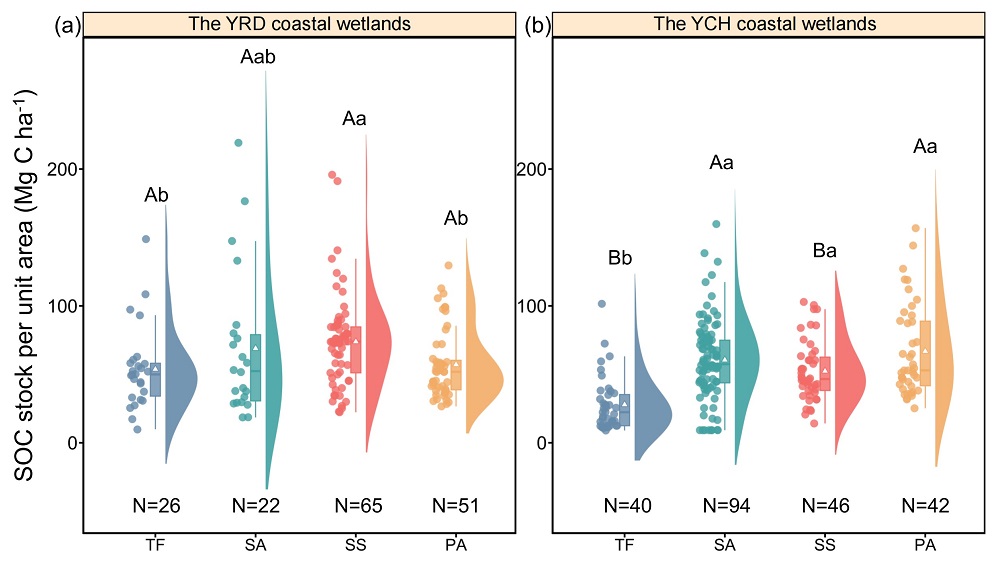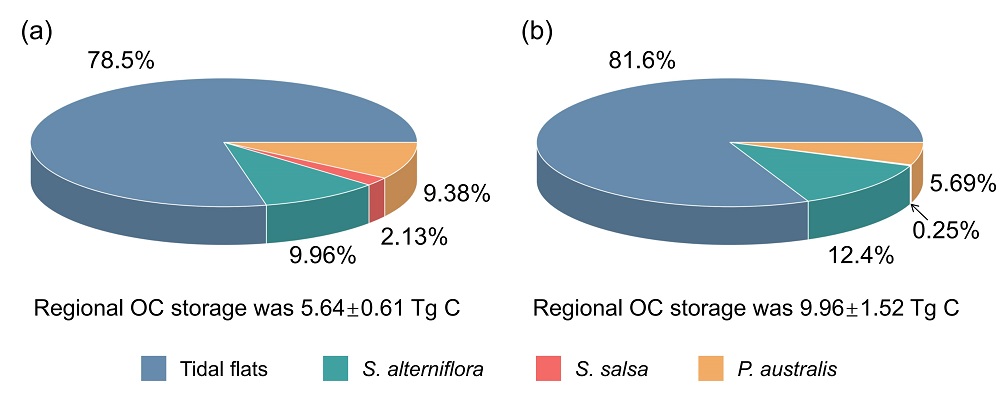Researchers Evaluate Blue Carbon Storage in Coastal Wetlands
In coastal ecology, a recent study by researchers at the South China Botanical Garden has shed light on the blue carbon storage capacity of tidal flats and salt marshes in China. Coastal wetlands, consisting primarily of vegetated areas and unvegetated tidal flats, are vital ecosystems providing numerous ecological services. In China, these coastal wetlands act as effective blue carbon reservoirs, contributing to the mitigation of global climate change through the capture and storage of organic carbon. The exceptional carbon sequestration capacity of these wetlands lies in their ability to capture carbon produced within the ecosystem and store carbon from external environments, preserved in sediments under anaerobic conditions. However, past assessments of blue carbon have primarily focused on the soil organic carbon storage in vegetated coastal wetland ecosystems, often overlooking the potential of tidal flats as blue carbon sinks.
To address this oversight, researchers from the Coastal Zone Ecosystem Processes and Environmental Health Research Group at the South China Botanical Garden, Chinese Academy of Sciences, conducted a comparative evaluation of two representative coastal wetlands in China—the Yellow River Delta and Yancheng coastal wetlands. This study encompassed different types of coastal wetland ecosystems, including unvegetated tidal flats and three types of salt marshes covered by Spartina alterniflora, Suaeda salsa, and Phragmites australis. The research team collected field samples and integrated data to compare the organic carbon stock per unit area across different coastal regions and wetland types, evaluating the organic carbon storage within both coastal regions.
Results indicated that the organic carbon stock per unit area in vegetated salt marshes was significantly higher than in unvegetated tidal flats within the two study areas. Interestingly, the organic carbon storage in the tidal flats of the Yellow River Delta was comparable to that of the S. salsa salt marshes in Yancheng. The study estimated the regional organic carbon storage to be 5.64 ± 0.61 Tg C in the Yellow River Delta and 9.96 ± 1.52 Tg C in the Yancheng coastal wetlands. Despite the lower organic carbon storage per unit area in coastal tidal flats, their extensive distribution along China's coast made them a primary contributor to regional organic carbon storage, accounting for more than 75% of the total regional storage. This study revealed the differences in organic carbon storage among different types of wetlands. It emphasized the importance of considering coastal tidal flats in blue carbon assessments, particularly in countries like China with extensive tidal flat distributions.
The research findings were published online in the international geological journal Palaeogeography, Palaeoclimatology, Palaeoecology (https://doi.org/10.1016/j.palaeo.2024.112509). Zhou Jinge, a doctoral student from the Coastal Zone Ecosystem Processes and Environmental Health Research Group at the South China Botanical Garden, is the first author of the paper. At the same time, Professor Wang Faming, the head of the research group and director of the Xiaoliang Station, is the corresponding author. This study was supported by the National Natural Science Foundation of China , the Guangdong Provincial Key Research and Development Program, the Guangdong Provincial Basic and Applied Basic Research Fund, the International Cooperation Project of the Belt and Road Scientific Organization, the Chinese Academy of Sciences Youth Team for Basic Research, and the Youth Innovation Promotion Association.

Figure 1. Comparative analysis of soil organic carbon stock per unit area across diverse wetland types in two coastal areas

Figure 2. Estimation of organic carbon sequestration in two coastal regions
File Download: